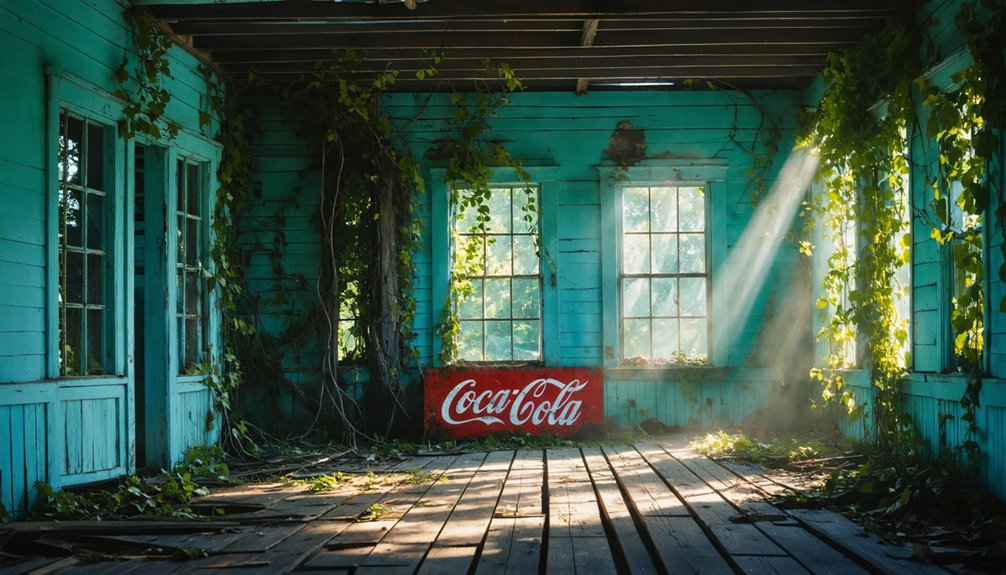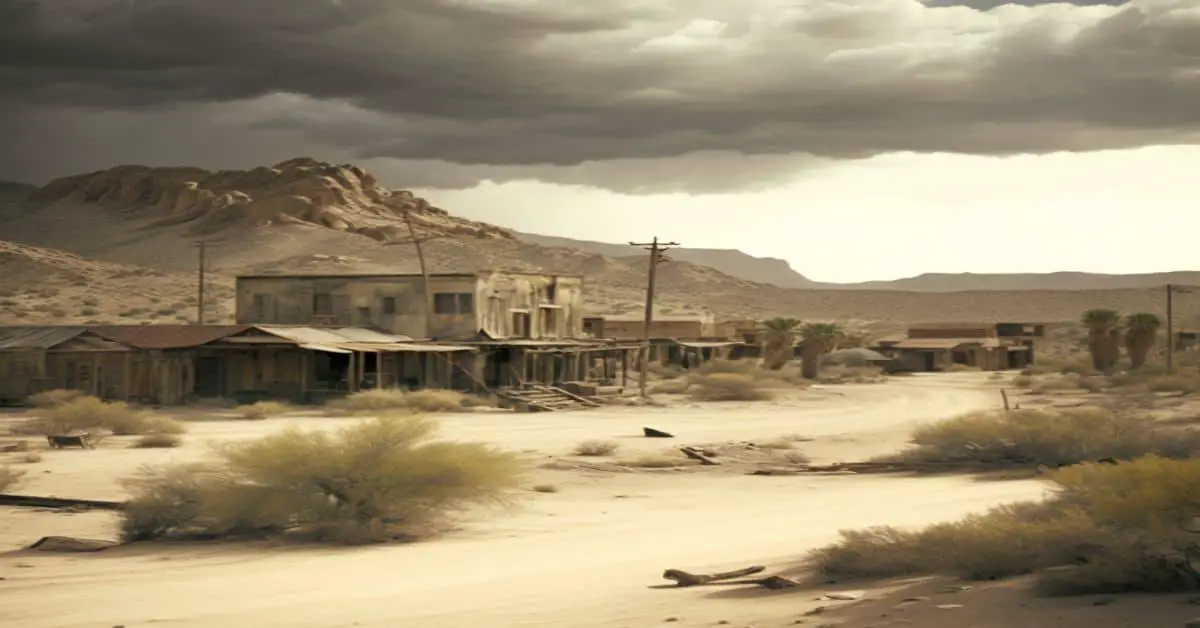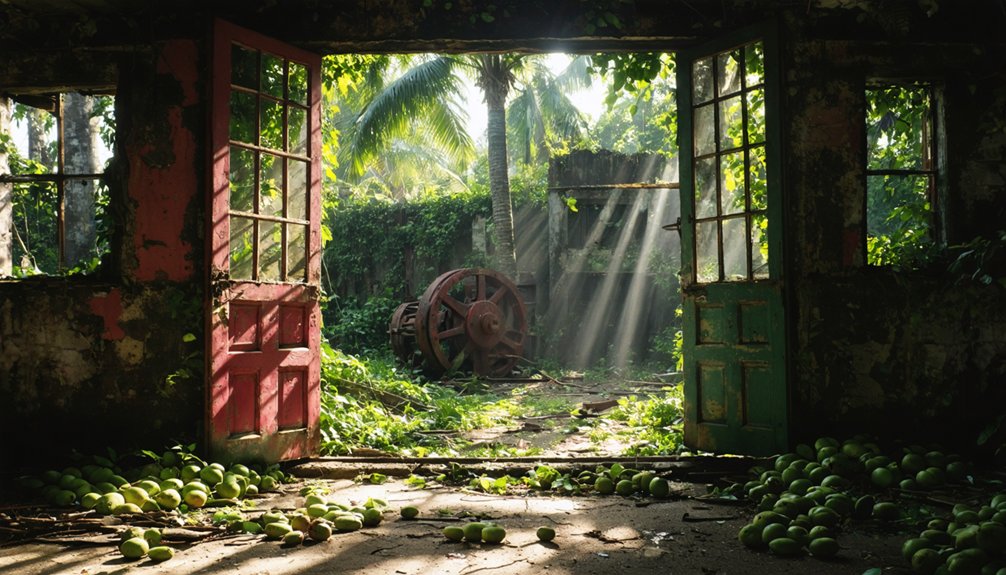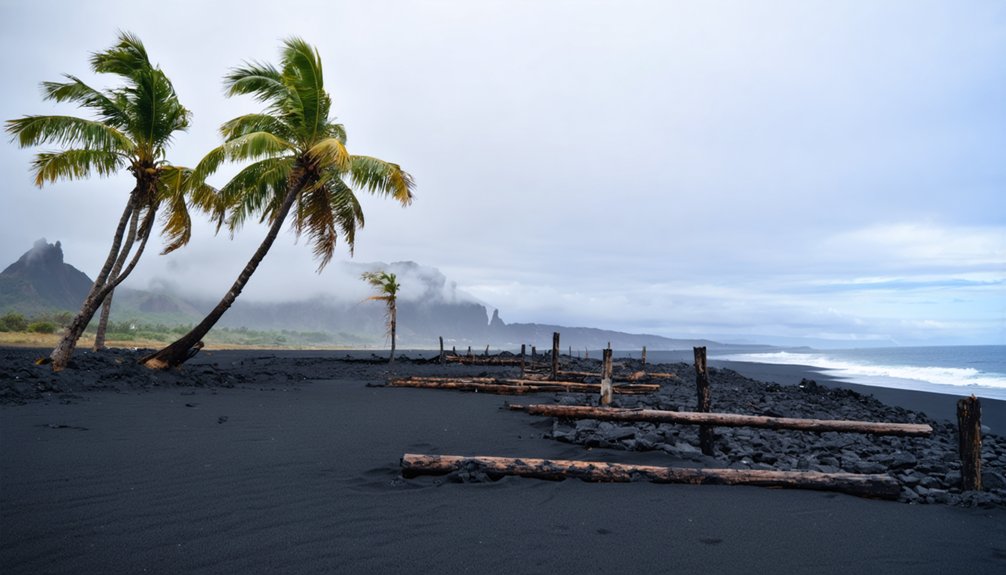You’ll find Halawa Valley on Molokai’s eastern shore, where a once-thriving Hawaiian village flourished for 1,400 years until the devastating 1946 tsunami. The 30-foot waves obliterated homes, sacred heiau temples, and taro fields, transforming this ancient settlement into a haunting ghost town. Today, mysterious church bells still echo near ruins, and Night Marchers’ spirits traverse traditional paths at dusk, while cultural guides share stories of this sacred place’s remarkable past.
Key Takeaways
- Halawa was a thriving Hawaiian village with 1,400 years of history before being completely destroyed by a devastating tsunami in 1946.
- The tsunami’s 30-foot waves obliterated homes, agricultural fields, and most structures, leaving only a few stone churches standing.
- Ancient Hawaiian cultural sites remain,
The Thriving Village of Old Halawa
Nearly 1,400 years ago, Halawa Valley emerged as one of Hawaii’s earliest Polynesian settlements, growing into a thriving community of several thousand residents.
You’d have found a rich cultural heritage preserved in stone pathways, house foundations, and sacred heiau temples scattered throughout the protected valley.
The community’s agricultural practices centered on sophisticated taro farming, supported by advanced irrigation systems that channeled fresh water from streams to fertile fields.
Ancient Hawaiians mastered taro cultivation through intricate irrigation networks, directing stream water to nourish their thriving agricultural fields.
The valley’s natural harbor and deep geography provided both security and resources for the self-sufficient population.
Daily life revolved around shared labor in the taro patches, fishing in the bay, and gathering wild plants, while religious ceremonies and harvest festivals strengthened community bonds.
Ancient knowledge passed through generations, with families like the Solatarios maintaining centuries-old traditions.
Like the early settlers of Haleiwa Town, the community relied heavily on taro cultivation for sustenance and trade.
The peaceful existence of this vibrant community continued until the 1946 tsunami devastated the area and forced many residents to relocate.
The Devastating 1946 Tsunami
You’ll find yourself transported back to April 1, 1946, when Halawa Valley residents witnessed the ocean’s haunting withdrawal before a massive tsunami, triggered by an Aleutian Islands earthquake, crashed onto Hawaiian shores.
The merciless waves, reaching heights of 30 feet, obliterated the thriving village, drowning residents and destroying essential crops including the cherished taro fields used for poi production. The devastating wave pattern continued as 6 to 7 waves struck at intervals throughout the morning. The absence of an early warning system led to 96 deaths in Hilo alone.
The catastrophic event forever transformed Halawa from a bustling community into a ghost town, leaving behind only memories of those lost and serving as a catalyst for the creation of the Pacific Tsunami Warning Center in 1949.
Deadly Wave Hits Shore
While residents of Hawaii slept peacefully in the early hours of April 1, 1946, a massive 8.6 magnitude earthquake near Alaska’s Aleutian Islands triggered one of the Pacific’s most devastating tsunamis.
Without modern tsunami predictions or coastal resilience measures in place, the waves raced across the ocean at nearly 500 miles per hour. You would’ve witnessed the ocean’s eerie retreat before massive walls of water, reaching up to 55 feet in Hilo, slammed into Hawaii’s shores.
The waves struck in 15 to 20-minute intervals, ripping houses from their foundations and devastating coastal communities. The tragedy led to the creation of the Pacific Tsunami Warning Center in 1948. In Halawa, like many other locations, you couldn’t outrun the crushing force of water that claimed 159 lives across Hawaii and caused $26 million in damage. The destruction extended far beyond Hawaii, with surges of 14 feet reported along California’s coastline.
Lives Lost Forever
The devastating toll of Hawaii’s 1946 tsunami became painfully clear as dawn broke over the islands. You’d find 159 souls lost across Hawaii, with Hilo bearing the heaviest burden of 96 deaths. Loss memorials would later mark where entire families disappeared, including schoolchildren and teachers caught in collapsing buildings.
The massive waves, triggered by a 7.4-magnitude earthquake in Alaska’s Aleutian Islands, unleashed unprecedented destruction. The tsunami raced across the Pacific at 500 miles per hour, giving residents precious little time to react.
- Five Coast Guard men perished at Scotch Cap lighthouse, their structure completely destroyed.
- Maui’s communities lost 14 residents, with 550 people suddenly finding themselves homeless.
- 163 injuries added to the heartbreaking toll, primarily concentrated in Hilo’s bayfront area.
Survivor stories tell of heroic rescues amid the chaos, like firefighters braving secondary waves to save trapped victims.
The absence of a warning system meant many never had a chance, leading to profound changes in how Hawaii would prepare for future tsunamis.
Town Erased By Nature
In a matter of hours on April 1, 1946, massive tsunami waves triggered by an 8.1-8.6 magnitude Aleutian earthquake transformed Halawa’s coastal landscape into unrecognizable ruins.
You’ll find it hard to imagine that this ghost town was once a thriving community with deep cultural significance, where families farmed taro and stored poi for generations.
The waves, reaching heights of 30 feet, swept inland with devastating force, erasing centuries of town history.
Everything in their path was destroyed – homes torn from foundations, agricultural fields wiped clean, and essential infrastructure reduced to debris.
Just as in Laupahoehoe, where teacher cottages crumbled under the waves’ impact, Halawa’s structures stood no chance against nature’s fury.
With no tsunami warning system in place at the time, residents had no advance warning of the impending disaster.
Only the most resilient structures, like small stone churches, survived nature’s fury.
The catastrophic destruction of Halawa marked a permanent change in Hawaii’s coastal landscape, effectively ending the town’s story as a living community.
Sacred Grounds and Ancient Sites
Nestled within Halawa Valley‘s lush landscape, at least 17 heiau stand as evidence to the area’s profound spiritual significance in ancient Hawaiian culture.
You’ll find sacred rituals once performed at the Hale o Papa, where ancient deities like Papahānaumoku and Hina were honored. The valley’s spiritual essence lives on through its cave burials and lua entrances, believed to connect with otherworldly domains.
- Agricultural terraces near temples showcase how spiritual and daily life intertwined
- Sacred fishponds tied to shark ‘aumakua reveal deep connections to guardian spirits
- Cave sites dating to the 15th century preserve evidence of sustained indigenous practices
From medicinal herbs to feathers for royal cloaks, every resource in Halawa held both practical and spiritual significance, reflecting Hawaiian concepts of kapu in ecological stewardship.
Tales of Supernatural Encounters

When you walk through Halawa after sunset, you’ll hear the haunting echoes of phantom church bells resonating across abandoned taro fields where ancient spirits are said to wander freely.
Local accounts tell
Ghostly Church Bell Echoes
Locals still whisper about mysterious church bell sounds that drift through Halawa Valley, though the original Congregational Church hasn’t stood since the devastating 1946 tsunami.
These ghostly legends have become intertwined with the rich cultural heritage of this historic site, where echoing memories of the past seem to resonate through time.
- You’ll hear tales of phantom bell tolls that pierce the silence during sacred occasions, particularly near the church’s original foundation.
- Some say you can sense the spiritual energy that lingers from the old congregation, especially during traditional Hawaiian celebrations.
- If you visit at sunrise or sunset, you might experience what locals describe as ethereal chimes carried on the valley breeze, reminding you of the church that once served as the community’s heart.
Wandering Spirits After Dusk
Beyond the church bell’s haunting echoes, Halawa Valley harbors more mysterious encounters after sunset.
You’ll encounter ancient Hawaiian warrior spirits, known as Night Marchers, who follow traditional spirit paths through the darkness. Their presence manifests through rhythmic footsteps, drumbeats, and flickering torchlight.
If you find yourself in their path, you must show respect by lying face down, avoiding eye contact at all costs. Those who dare to look upon these spirits risk being taken to their domain unless a family member intervenes.
The valley’s historic battlegrounds, where hundreds of warriors perished, remain active with supernatural energy. You’ll feel sudden cold spots, hear unexplained chanting, and might witness faceless apparitions drifting through the shadows.
Local wisdom advises leaving offerings to appease these territorial spirits.
Ancient Taro Field Hauntings
Deep within Halawa Valley‘s abandoned taro fields, supernatural encounters echo the ancestral connection between land and spirit.
You’ll find that these ancient lo’i kalo, once thriving with cultural significance and sacred rituals, now whisper tales of unexplained phenomena.
- Local stories tell of mysterious lights dancing above former taro ponds where ancient temples once stood, particularly near the sacred women’s temple site.
- Night visitors report hearing the rhythmic sounds of traditional taro farming tools and chants echoing across the valley, though no one’s working the fields.
- Residents describe sensing ancestral presences near the destroyed cultural sites, especially in areas where the H-3 freeway construction disturbed ancient rituals.
These supernatural accounts serve as powerful reminders of Halawa’s rich agricultural heritage and the spiritual bond between the land and its original stewards.
Natural Beauty and Geographic Features
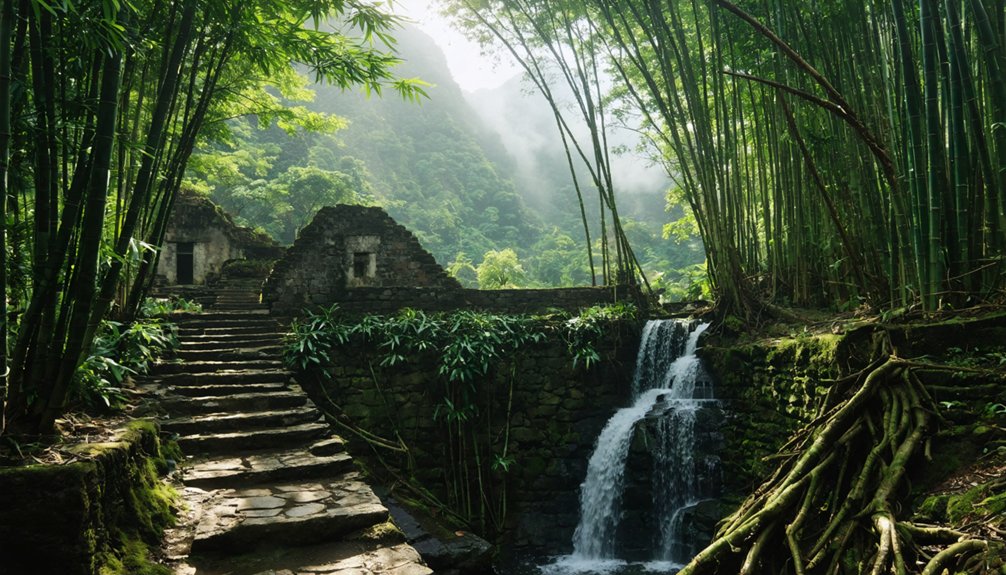
Nestled within the Ewa District of Oahu, Halawa Valley showcases a dramatic landscape of steep ridges and narrow gorges carved by the meandering Halawa Stream.
You’ll find elevations rising to 1,100 feet near the Tetsuo Harano Tunnels, where the valley’s natural landscapes reveal breathtaking waterfalls, including the 500-foot Hipuapua Falls and 250-foot Moaula Falls.
The valley’s ecological diversity spans from coastal lowlands to upland forests along the Ko’olau ridges.
While much has changed since ancient times, you can still explore remnants of native vegetation alongside introduced eucalyptus and ironwood trees.
The area’s 2.3 square miles encompass diverse zones that support hiking, surfing, and fishing.
The H-3 freeway, built on viaducts to preserve the valley’s natural water flow, stands as a demonstration of modern engineering working in harmony with nature.
Present-Day Remnants and Tourism
While nature continues to shape Halawa Valley’s landscape, you’ll find the haunting remains of the Halawa Congregational Church standing as a symbol of this community’s historical significance.
The ghost town has evolved into a unique blend of old and new, where modern homes exist alongside ancient ruins and taro farming remnants.
Ancient ruins and taro fields share space with contemporary dwellings, creating a fascinating timeline of Hawaiian life in one place.
- Experience the accessible 2WD roads that lead you through this living museum of Hawaiian history
- Discover the perfect photo opportunities among church ruins and cultural sites
- Engage with local guides who share authentic stories of tsunami impact and survival
Tourist engagement has transformed Halawa into more than just a ghost town.
You’ll encounter a vibrant mix of preservation efforts, educational experiences, and cultural exchange opportunities.
The area’s year-round warm climate makes it an ideal destination for exploring Hawaii’s complex past while supporting local communities.
Frequently Asked Questions
Are There Any Documented Cases of Injuries From Ghost Encounters in Halawa?
While you’ll hear stories of ghost sightings and paranormal activity in Halawa, there aren’t any officially documented injuries – only unverified reports like William Seward’s mysterious black stain and accounts of choking sensations.
What Precautions Should Visitors Take When Exploring the Abandoned Church Ruins?
You’ll need proper safety gear including boots, gloves, and helmets. Book guided tours when possible, test structural stability before entering, and always explore with a companion for safer exploration.
Do Any Former Residents’ Descendants Still Visit Halawa Regularly?
Yes, you’ll find regular descendant visits and family reunions in Halawa Valley, where Kanaka Maoli practitioners maintain sacred sites, conduct cultural ceremonies, and lead educational hikes connecting to their ancestral heritage.
What Artifacts From the Original Village Have Been Recovered and Preserved?
Persistent preservationists have found fascinating artifacts including stone discs, shell beads, tridacna choppers, wooden god statues, and human burial items that tell you compelling stories of village history.
Is Overnight Camping Allowed Near the Ghost Town’s Historical Sites?
You can’t camp near the ghost town sites due to strict camping regulations and historical preservation rules. You’ll need to find designated campgrounds elsewhere and obtain proper permits first.
References
- https://www.youtube.com/watch?v=r0DwuyAlAY0
- https://www.honolulumagazine.com/our-favorite-ghost-stories-about-haunted-places-on-oahu/
- https://activityauthority.com/ghost-stories-hawaii/
- https://www.americanghostwalks.com/7-creepiest-urban-legends-and-ghost-stories-from-hawaii
- https://danielshawaii.com/pali-lookout-haunted-highway-in-hawaii/
- https://www.mysteries-of-hawaii.com/blog
- https://en.wikipedia.org/wiki/List_of_ghost_towns_in_Hawaii
- https://nvtami.com/2023/04/26/big-island-hawaii-ghost-towns/
- https://www.ghosttowns.com/states/hi/halawa.html
- https://haleiwatown.com/haleiwa-town-history/
